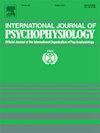Fearless to satisfy curiosity? Longitudinal relationships of sensitivity to reward and punishment with curiosity and the functional connectivity basis
IF 2.5
3区 心理学
Q3 NEUROSCIENCES
引用次数: 0
Abstract
Curiosity, the intrinsic drive to know by acquiring novel information and experiencing novel stimuli, is widely regarded as a fundamental desire for exploration. Information is often perceived as a reward, and curiosity can manifest as the intense, even fearless, pursuit of potential rewards. However, curiosity is also considered to be a rational process, requiring individuals to weigh potential risks against anticipated benefits. To investigate the multifaceted nature of curiosity, this study used a cross-lagged panel model to examine the relationships between sensitivity to reward (SR), sensitivity to punishment (SP), and curiosity. A predictive model was then constructed using resting-state functional connectivity data through connectome-based predictive modelling. Building on the cross-lagged panel model results, a mediation analysis was conducted to investigate the mediating roles of SR and SP in the relationship between the predictive network and curiosity. The findings revealed that SR positively predicts curiosity and that the relationship between SP and curiosity is reciprocal and negative, with the negative prediction of SP being significantly stronger. Additionally, a negative curiosity prediction network was identified, with the strongest contributions being intra- and internetwork functional connectivity involving the motor, cerebellar, limbic and medial frontal networks. Finally, the curiosity prediction network was found to operate via the enhancement of SP and attenuation of SR. These findings provide preliminary evidence for associations between SR, SP, and curiosity over time and the incentive-driven yet adaptive nature of curiosity.
无所畏惧满足好奇心?赏罚敏感性与好奇心的纵向关系及其功能连通性基础
好奇心是通过获取新信息和体验新刺激而获得知识的内在动力,被广泛认为是探索的基本欲望。信息通常被视为一种奖励,好奇心可以表现为对潜在奖励的强烈甚至无所畏惧的追求。然而,好奇心也被认为是一个理性的过程,要求个人权衡潜在的风险和预期的利益。为了探究好奇心的多面性,本研究采用交叉滞后面板模型考察了奖励敏感性(SR)、惩罚敏感性(SP)与好奇心之间的关系。然后,通过基于连接体的预测建模,利用静息状态功能连接数据构建预测模型。在交叉滞后面板模型结果的基础上,进行中介分析,探讨SR和SP在预测网络与好奇心关系中的中介作用。结果表明,SR对好奇心有正向预测作用,SP与好奇心呈负向关系,其中SP的负向预测作用显著强于SR。此外,还发现了一个负好奇心预测网络,其中最重要的贡献是网络内和网络间的功能连接,包括运动网络、小脑网络、边缘网络和内侧额叶网络。最后,我们发现好奇心预测网络通过SP的增强和SR的衰减来运作。这些发现为SR、SP和好奇心之间随时间的关系以及好奇心的激励驱动和适应性提供了初步证据。
本文章由计算机程序翻译,如有差异,请以英文原文为准。
求助全文
约1分钟内获得全文
求助全文
来源期刊
CiteScore
5.40
自引率
10.00%
发文量
177
审稿时长
3-8 weeks
期刊介绍:
The International Journal of Psychophysiology is the official journal of the International Organization of Psychophysiology, and provides a respected forum for the publication of high quality original contributions on all aspects of psychophysiology. The journal is interdisciplinary and aims to integrate the neurosciences and behavioral sciences. Empirical, theoretical, and review articles are encouraged in the following areas:
• Cerebral psychophysiology: including functional brain mapping and neuroimaging with Event-Related Potentials (ERPs), Positron Emission Tomography (PET), Functional Magnetic Resonance Imaging (fMRI) and Electroencephalographic studies.
• Autonomic functions: including bilateral electrodermal activity, pupillometry and blood volume changes.
• Cardiovascular Psychophysiology:including studies of blood pressure, cardiac functioning and respiration.
• Somatic psychophysiology: including muscle activity, eye movements and eye blinks.

 求助内容:
求助内容: 应助结果提醒方式:
应助结果提醒方式:


